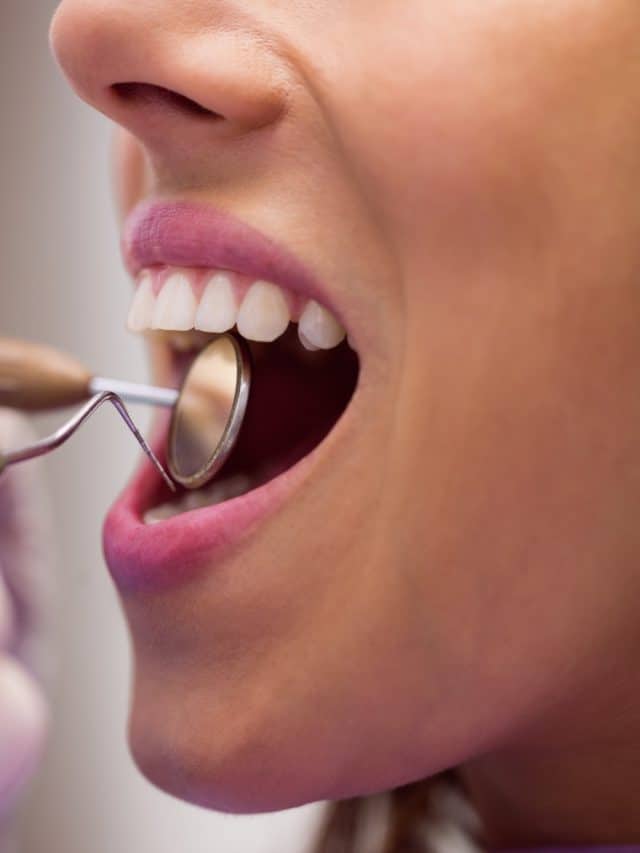
How often have you been embarrassed about your not-so-white teeth and refrained from smiling? Tooth staining or discoloration often occurs due to various common factors, including tobacco use, consumption of beverages like coffee and tea, inadequate oral hygiene, medications, excessive fluoride exposure, and the natural aging process, which causes enamel to accumulate stains. As we age, the enamel thins, causing teeth to lose their shine and become less white naturally. This also makes the yellow dentin underneath more noticeable as the pulp chambers shrink[1]. To address these issues, tooth whitening treatments prove most effective, especially in combating extrinsic stains.
However, there are a lot of myths around teeth whitening that need to be addressed. Some of them are:
Myth 1: Teeth whitening can result in tooth sensitivity
Fact: Tooth sensitivity is a common after-effect of tooth whitening. However, it is usually temporary, lasting 2-3 days, and the discomfort is generally mild to moderate in intensity[2]. Home-based bleaching typically produces less tooth sensitivity than in-office bleaching procedures[3].
However, not all at-home bleaching kits are safe for you. Do check with an expert.
Myth 2: Teeth with restorations (fillings, crowns etc) are less sensitive to in-office teeth whitening
Fact: In-office bleaching with 35% hydrogen peroxide can effectively whiten teeth with restorations. However, teeth with restorations experienced noticeably stronger tooth sensitivity than healthy, sound teeth[3].
Myth 3: Teeth whitening harms your enamel
Fact: Overusing certain over-the-counter whitening products can potentially harm your gums and enamel. However, professional teeth whitening by a dentist using the appropriate gel is a safe option. These products allow the whitening gel’s chemicals to penetrate your enamel without eroding the surface and are safe[4].
Myth 4: Whitening toothpaste functions like professional whitening
Fact: Whitening toothpaste does not work in the same way as professional whitening treatments. While it can help remove surface stains, professional whitening involves more potent ingredients and methods to achieve deeper and more significant results.
Myth 5: Results from teeth whitening lasts forever
Fact: Teeth whitening results are not permanent and may vary from person to person. The duration of the whitening effects may depend on various factors, such as your oral care and hygiene, diet, and lifestyle choices. Usually, the results last from several months to a few years; regular maintenance and touch-ups may be necessary to keep your teeth looking their best.
For prolonged teeth whitening results, prioritize your oral hygiene. Explore our selection of oral care products now.
In summary, if you want to keep your teeth white and beautiful for a long time, try to quit smoking, avoid drinks that can stain your teeth, and brush and floss regularly. These habits will also help teeth whitening methods work better.
If you’re ready to start your teeth whitening journey, let’s schedule an appointment. We look forward to seeing you soon!
(The article is written by Dr.Subita Alagh, Senior Executive, and reviewed by Monalisa Deka, Senior Health Content Editor)
References
1. Limeback H, Meyer F, Enax J. Tooth Whitening with Hydroxyapatite: A Systematic Review. Dentistry Journal. 2023; 11(2):50. Available online from: https://www.mdpi.com/2304-6767/11/2/50
2. Karina Irusa, Islam Abd Alrahaem, et al. Tooth whitening procedures: A narrative review, Dentistry Review, Volume 2, Issue 3, 2022, 100055, ISSN 2772-5596,https://www.sciencedirect.com/science/article/pii/S2772559622000207
3. Carey CM. Tooth whitening: what we now know. J Evid Based Dent Pract. 2014 Jun;14 Suppl:70-6. https://www.ncbi.nlm.nih.gov/pmc/articles/PMC4058574/
4. Tompkins AM, Coleman SS, Carey CM. Erosive capacity of five commercial bleaching products on human enamel. J Dent Res. 2014;93(Spec Iss A):697. Available from: https://www.researchgate.net/publication/266803706_Erosive_Capacity_of_Five_Commercial_Bleaching_Products_on_Human_Enamel
